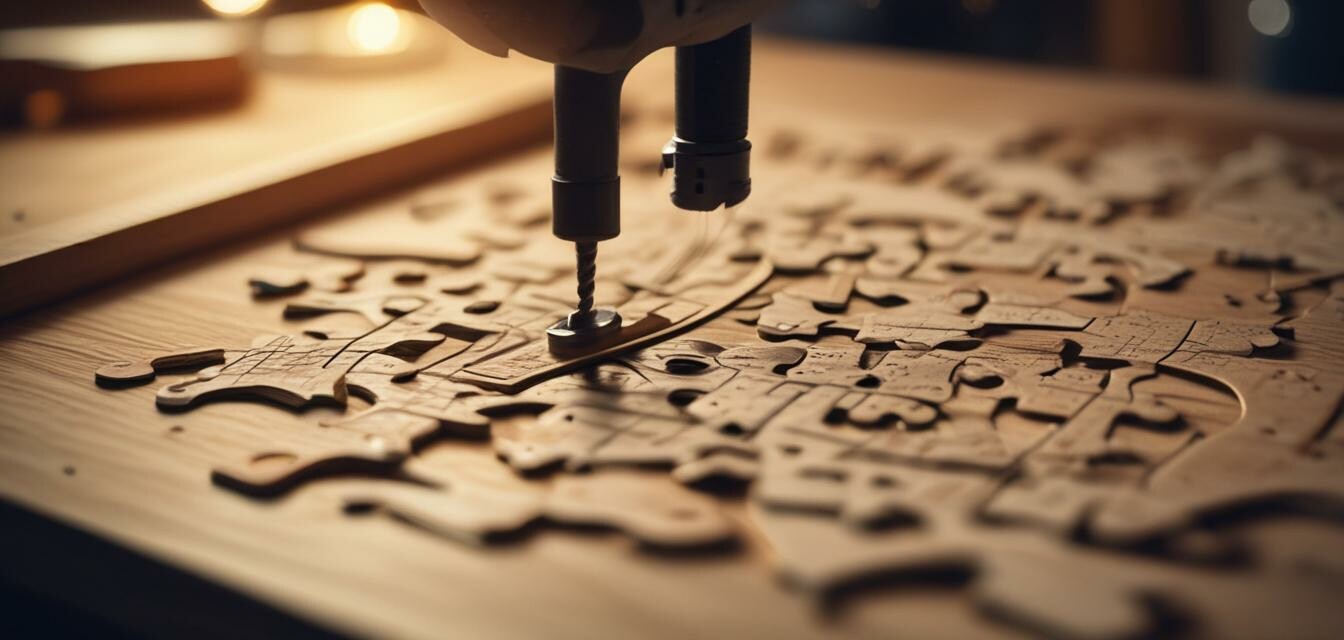
Mastering the Use of a Jigsaw
Key Takeaways
- A jigsaw is a versatile tool suited for intricate cuts on various materials.
- Understanding the different types of blades is crucial for achieving precise results.
- Safety precautions are paramount to ensure a smooth and accident-free experience.
- Routine maintenance of your jigsaw can prolong its life and enhance performance.
In the world of portable power tools, the jigsaw reigns supreme for its ability to handle intricate cutting tasks with precision. Whether you're a contractor or a DIY enthusiast, mastering the jigsaw opens the door to a variety of projects. This guide will walk you through everything you need to know to effectively use a jigsaw, from the basics to advanced techniques.
Getting Started with Your Jigsaw
Before diving into intricate cuts, let’s ensure you have a strong foundation in using your jigsaw.
Understanding Your Jigsaw
- Body: The main frame of the jigsaw, housing the motor and control mechanisms.
- Blade: The cutting component, available in various styles for different applications.
- Shoe or Base Plate: Provides stability; can be adjusted for bevel cuts.
- Trigger and Speed Settings: Control the power and speed of your cuts.
Selecting the Right Blade
Choosing the proper blade is pivotal for effective cutting. Here’s a breakdown of common jigsaw blades:
| Blade Type | Material | Best For |
|---|---|---|
| High-Speed Steel (HSS) | Wood, Soft materials | General cutting |
| Tungsten Carbide | Hardwoods, Composite materials | Durable and longer-lasting |
| Bimetal | Various materials | Versatility |
| Reverse Tooth | Plywood, Laminates | Reduce splintering on the top side |
For further insights on selecting the best tools for your projects, visit our Buying Guides.
Safety First: Best Practices for Jigsaw Use
Before you begin any cutting, it’s essential to follow safety protocols:
- Always wear safety goggles and a dust mask.
- Ensure your work area is clean and free from distractions.
- Secure your material with clamps to prevent movement.
- Keep hands away from the blade while cutting.
Preparing for Your Cut
Preparation is key to successful jigsaw use. Here’s how to set up for cutting:
- Mark your cutting line clearly on the material.
- Select the appropriate blade based on the material type.
- Set your jigsaw to the correct speed for the job.
Executing the Cut
Follow these steps for a smooth cutting process:
- Start the jigsaw before making contact with the material.
- Guide the saw steadily along the cutting line.
- Do not force the jigsaw; let the blade do the work.
- For curved cuts, make gradual, fluid movements.
Post-Cutting Techniques
After making cuts, there are some additional steps to take:
- Inspect the cut for any rough edges.
- Smooth any rough edges with sandpaper if necessary.
- Clean the jigsaw and check the blade for wear.
Pros
- Ability to make intricate and curved cuts.
- Versatile for various materials, including wood and plastic.
- Lightweight and easy to handle, perfect for on-the-go tasks.
Cons
- Not suitable for heavy-duty cutting tasks.
- Limited depth of cuts compared to saws.
Maintaining Your Jigsaw
To keep your jigsaw in top condition, follow these maintenance tips:
- Regularly check and replace worn blades.
- Clean dust and debris from the motor and body.
- Ensure all screws and settings are tight and secure.
If you seek more tips on tool maintenance, check out our article on How-To Guides.
Common Issues and Troubleshooting
Even with careful use, you may encounter some common jigsaw problems:
| Problem | Possible Causes | Solutions |
|---|---|---|
| Blade Stalling | Improper blade tension or worn blade | Check blade tension and replace if necessary |
| Spoor Cut | Wrong blade or feed rate | Use a blade meant for the material, adjust feed rate |
| Excessive Vibration | Loose components | Tighten screws, check for blade alignment |
Conclusion
Mastering the jigsaw not only enhances your skills but also opens up endless possibilities for your projects. With the correct techniques, blades, and safety practices, you can achieve both intricate and smooth cuts. Remember to regularly maintain your tools for long-lasting performance. For more insights and tips, explore our Portable Saws category.